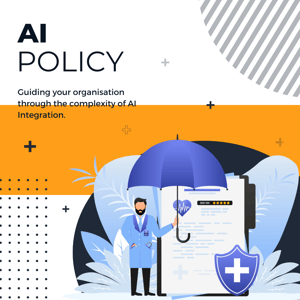Mitigating Risk in AI Projects: A Comprehensive Guide for Operations Leaders
Strategic AI Risk Management: Practical Steps and Compliance with NIS2.
For Operations leaders within large enterprise organisations in both public and private sectors, the integration of AI offers promising enhancements in efficiency, customer experience, and operational agility. However, the introduction of such technology also brings its share of risks, particularly in the realm of compliance and operational stability. This guide aims to outline essential steps and considerations for mitigating these risks, particularly in light of Ireland's new NIS2 regulation affecting businesses that provide essential services.
Understanding AI Risks in Operations
AI systems, by their nature, can introduce complexities in data management, algorithmic bias, and system reliability. For Operations leaders, it's crucial to first identify and understand these risks:
-
Data Security and Privacy: AI systems process large amounts of data. Ensuring the security and privacy of this data is paramount, particularly under GDPR and the forthcoming NIS2 regulations.
-
Algorithmic Bias: Decisions made by AI can be biased if the data or the design of the algorithms are flawed, leading to unfair outcomes or operational risks.
-
System Reliability and Robustness: AI systems can sometimes behave unpredictably or fail to perform as expected, especially under unusual conditions.
-
Compliance and Regulatory Challenges: With the implementation of NIS2, companies providing essential services must ensure their AI systems do not become points of vulnerability within their operational processes.
Step 1: Establish a Robust AI Governance Framework
Before launching any AI initiative, it's essential to establish a governance framework that defines clear roles, responsibilities, and processes for overseeing AI projects. This framework should include:
- Ethical Guidelines: Define what constitutes ethical AI use in your organization, considering fairness, transparency, and accountability.
- Compliance Protocols: Incorporate NIS2 compliance checks into your AI systems, particularly if your organisation falls under the category of essential services. Regular audits and updates should be part of this protocol to ensure ongoing compliance.
- Risk Management Processes: Include procedures for ongoing risk assessments, performance monitoring, and mitigation strategies in case of AI failures.
Step 2: Prioritise Data Integrity and Security
Operations leaders must ensure that data used in AI systems is accurate, duly anonymised, and secure. Implement state-of-the-art cybersecurity measures to protect data from breaches and ensure data quality management practices are in place.
Step 3: Implement Transparent and Explainable AI
Opt for AI solutions that are not just powerful, but also transparent and explainable. This means choosing technologies that allow you to understand and explain decisions made by AI, which is crucial for maintaining trust among stakeholders and for regulatory purposes.
Step 4: Develop AI Literacy Within Your Organisation
Invest in training and development programs to enhance AI literacy among your staff. Understanding AI will help your team better manage AI tools and mitigate risks associated with AI implementations.
Step 5: Engage with AI Ethics Experts
Consult with AI ethics experts to review and guide the development and deployment of AI systems. This can help preemptively identify potential ethical risks and societal impacts of your AI applications.
Looking Beyond Risk: Opportunities in AI
While mitigating risks is crucial, Operations leaders should also consider the strategic opportunities AI presents:
- Enhanced Decision Making: AI can analyse vast amounts of data to provide insights that support better strategic decisions.
- Operational Efficiency: Automate routine tasks and optimise logistics to save time and reduce costs.
- Improved Customer Experience: Use AI to personalise customer interactions and improve service delivery.
Conclusion
For Operations leaders in Ireland's large enterprises, especially those in sectors classified under the NIS2 regulation, the thoughtful implementation of AI can not only mitigate risks but also unlock new operational efficiencies and opportunities. By following a structured approach to risk mitigation and focusing on ethical, secure, and compliant AI use, leaders can confidently leverage AI to its full potential.
Remember, mitigating risks in AI is not just about preventing losses; it's about setting the stage for significant gains in operational capabilities and strategic advantage. As you consider integrating AI into your operations, view it as an opportunity to enhance your organisational resilience and future-proof your operations.



